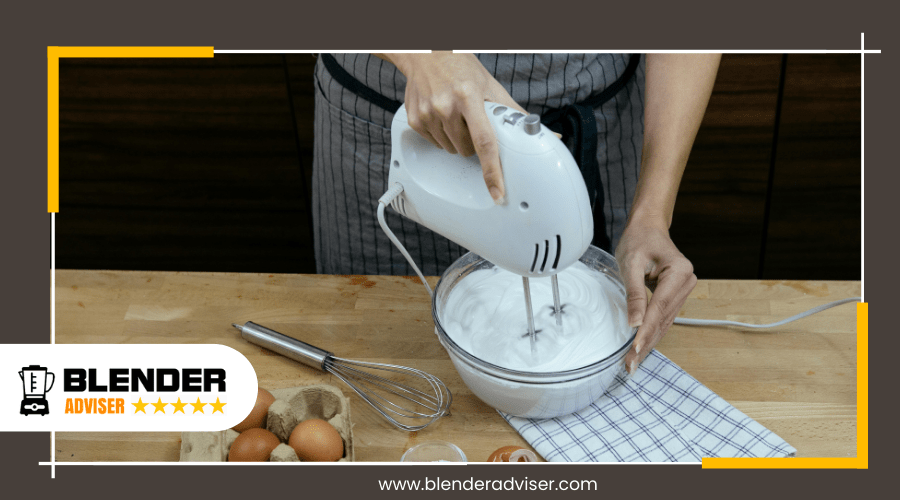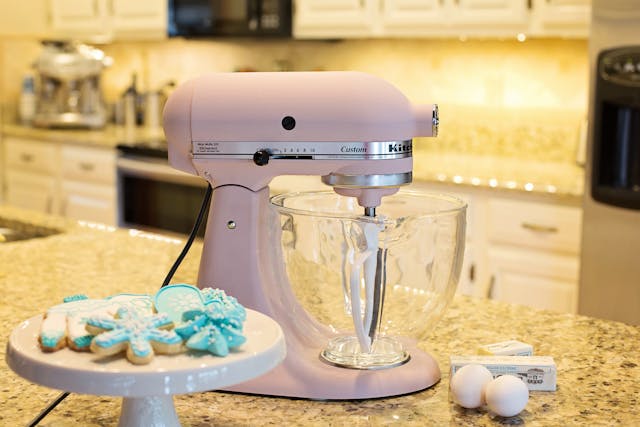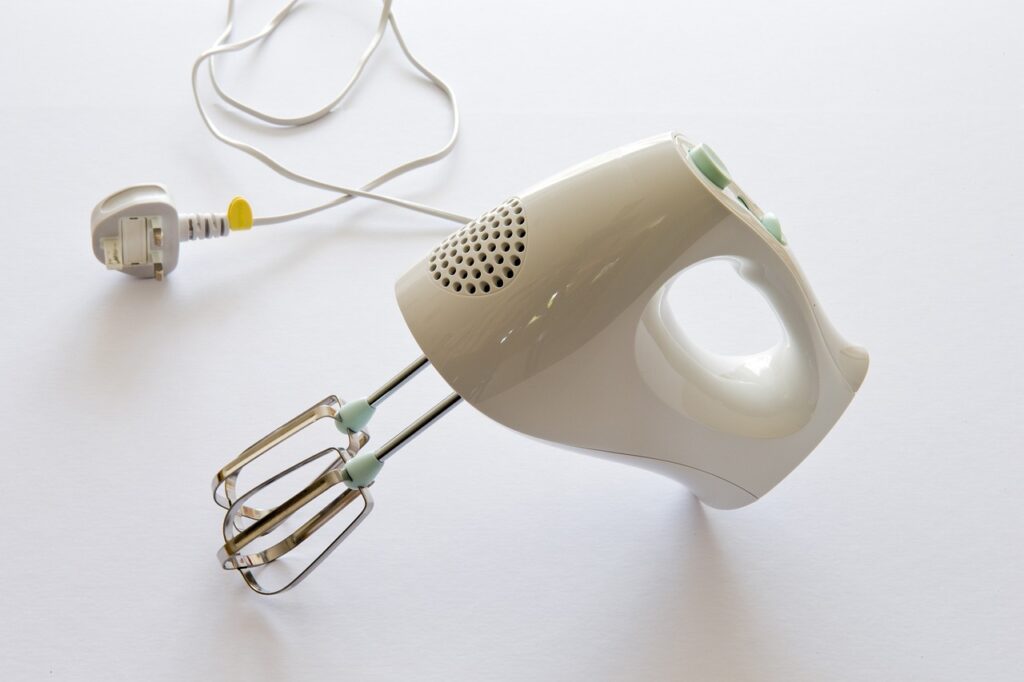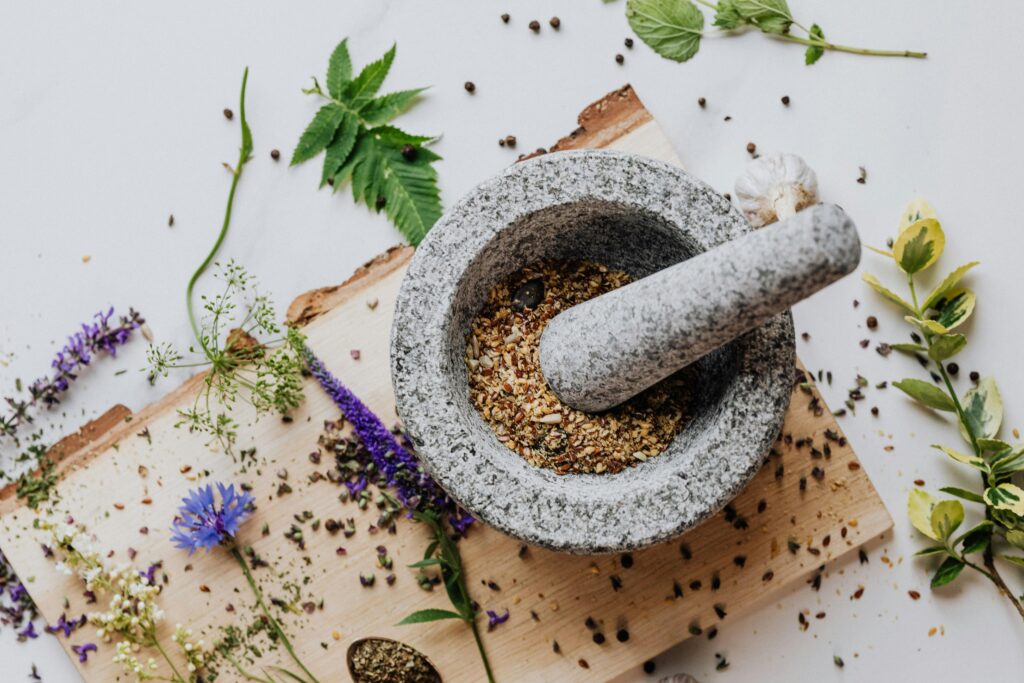Much like MacGyver, known for his ability to solve complex problems with everyday items, you might find yourself in a kitchen conundrum without an immersion blender at hand. Fear not, as several alternatives can come to your rescue for blending, pureeing, and even chopping tasks.
Whether it’s a hand mixer, food processor, or something as simple yet effective as a fork, you’ll discover there’s more than one way to achieve the desired consistency in your culinary creations. Let’s explore how these tools can adapt to your needs, leaving you equipped for any recipe that comes your way.
Hand Mixer Basics
Before diving into the world of immersion blenders, it’s essential to understand the basics of a hand mixer, a versatile tool that’s perfect for a variety of kitchen tasks. Unlike its bulky counterpart, the stand mixer, a hand mixer offers the convenience of portability and ease of use, especially when dealing with small to medium batches of food. When you’re using a hand mixer, you’re tapping into a device designed to blend wet and dry ingredients efficiently. This is thanks to its beaters or whisk attachments, which do the hard work of combining your ingredients without the need for manual stirring.
The beauty of a hand mixer lies in its versatility. Whether you’re blending icings, creating smooth scrambled eggs, or even prepping dough with attachments like a Pro Whisk or Dough Hook, this tool has got you covered. Plus, with cordless models available, you’re not tethered to an outlet, granting you freedom to move as needed. Remember to set speeds according to your task – mixing, whisking, creaming, or folding – to achieve the best results. In essence, mastering the use of a hand mixer can significantly enhance your kitchen prowess, making it a go-to for various culinary tasks.
Stand Mixer Functions
Delving into stand mixers, you’ll find they’re not just for baking; with various attachments, they effortlessly mix, whip, and knead, making them indispensable in the kitchen. Unlike their simpler cousin, the hand mixer, stand mixers bring a whole new level of power and versatility. With one on your countertop, you’re equipped to tackle a wide array of culinary tasks, from creating the perfect cake batter to preparing dough for homemade bread.
Stand mixers function similarly to immersion blenders by thoroughly blending ingredients to achieve the desired textures. However, their strength and stability make them ideal for more labor-intensive tasks. Here’s what sets them apart:
- Attachments Galore: Easily switch between the dough hook, whisk, or paddle depending on what your recipe calls for.
- Adjustable Speeds: Tailor the mixing speed to the specific needs of your ingredients, ensuring everything is perfectly combined without overmixing.
- Durability and Versatility: Quality stand mixers from reputable brands are built to last, making them a worthwhile investment for anyone who loves to bake or cook.
In essence, a stand mixer is more than just a tool for mixing; it’s a multipurpose appliance that can enhance your cooking and baking endeavors.
Food Processor Uses
When considering alternatives to an immersion blender, a food processor stands out for its ability to effortlessly achieve a silky-smooth texture in dishes like soups and sauces. The magic of a food processor lies in its precision and power, making it ideal for creating that perfect consistency in your tomato bisque or any other soup you’re craving. Unlike immersion blenders, food processors come in various sizes, adding a layer of versatility to your kitchen arsenal. Whether you’re working on a small batch of sauce or a large pot of soup, there’s a food processor size that’s just right for the task at hand.
What sets food processors apart is their suitability for soups, thanks to their larger capacity compared to immersion blenders. This means you can blend larger quantities in one go, saving time and effort. Beyond soups, food processors excel in making sauces, dips, and purees. While they may require a bit more setup and cleanup than an immersion blender, the convenience and efficiency they bring to blending tasks are undeniable. So, the next time you’re aiming for that smooth texture in your culinary creations, remember the food processor is your go-to gadget.
Electric Whisk Advantages
When you’re looking for a quick way to mix ingredients, an electric whisk speeds up the process significantly. It’s not just about mixing; this tool is versatile enough to handle various tasks, making it a must-have in your kitchen. Plus, cleaning it’s a breeze, which means you can enjoy your creations without dreading the cleanup.
Speeds Up Mixing
Electric whisks, often overlooked, significantly speed up the mixing process for various recipes, offering different speed settings to efficiently combine ingredients. Unlike a hand blender, which might be your go-to for blending, electric whisks specialize in tasks requiring a lighter touch, such as whipping cream or beating eggs, but they’re also capable of handling thicker mixtures.
They’re a breeze to use and even easier to clean, making them a convenient alternative for blending and more.
- Efficient mixing capabilities speed up the preparation of dishes and desserts.
- Easy to use and clean, making them convenient for everyday cooking.
- Capable of performing tasks similar to an immersion blender, including blending and whipping, but with added speed and efficiency.
Versatile Kitchen Tool
Offering unmatched versatility, electric whisks transform how you approach a plethora of recipes, from fluffy eggs to smooth batters. As a hand-held tool, they’re similar to hand mixers but excel in their ability to make every kitchen task seem effortless.
Whether you’re aiming for the perfect whipped cream or a lump-free cake mix, this kitchen tool is your go-to for mixing and blending with precision. With different speed settings at your fingertips, you can easily adjust to the task at hand, ensuring smooth and consistent results every time.
They’re not just about convenience; electric whisks elevate your cooking and baking by handling a variety of tasks efficiently, making them an indispensable tool in your kitchen arsenal.
Easy to Clean
Beyond their versatility, electric whisks also stand out for their ease of cleaning. Unlike immersion blenders or hand mixers with more complex structures, electric whisks are designed with simplicity in mind. This makes them not only a convenient choice for your mixing needs but also a breeze to clean after use. Here’s why cleaning them is so effortless:
- Detachable parts: The beaters can be easily removed, allowing for quick cleaning and maintenance.
- Dishwasher-safe: Many models are safe to place in the dishwasher, significantly simplifying the cleanup process.
- Simple wipe down: For the most part, a quick rinse or a wipe with a damp cloth is all it takes to keep them clean.
Choosing an electric whisk means spending less time on cleanup and more on enjoying your culinary creations.
Potato Masher Techniques
When using a potato masher as an alternative to an immersion blender, achieving a consistent mash is key to ensuring your soups and sauces have the right texture. You’ll find that keeping your masher clean and well-maintained simplifies this process and prolongs the tool’s life. Let’s explore techniques to master the consistency of your mash and the best practices for cleaning and maintaining your potato masher.
Mashing Consistency Tips
To achieve a similar consistency to that of an immersion blender, start by selecting the right potato masher for mashing soft vegetables like potatoes or carrots. Potato mashers are your go-to for blending ingredients into smooth textures, especially when you’re aiming for a consistency that’s close to what you’d get with an immersion blender. They’re simple, efficient, and surprisingly versatile.
- Select a sturdy potato masher: Ensure it feels comfortable in your hand and is made of durable material.
- Apply even pressure: For smoother textures, apply consistent pressure while mashing.
- Be patient: Achieving the perfect consistency might take a bit longer than using an immersion blender, but the results are worth it.
Cleaning and Maintenance
Proper cleaning and maintenance of your potato masher will extend its lifespan and ensure it’s always ready for use. Unlike an immersion blender or hand-held blender, the simplicity of a potato masher makes cleaning maintenance straightforward. Hand wash it with warm, soapy water, using a brush or sponge to remove food particles. For stubborn stains, a vinegar solution can be your go-to.
| Step | Tool | Tip |
|---|---|---|
| Hand Washing | Warm, soapy water | Ensures thorough cleaning |
| Removing Stains | Brush or Sponge | Gets into the masher’s holes |
| Preventing Rust | Dry Storage | Keeps it in optimal condition |
Remember to store your masher in a dry place to avoid rust, keeping it efficient for your next culinary adventure.
Manual Whisking Tips
Grabbing a manual whisk can transform the way you mix ingredients, offering precise control over the texture and consistency of your culinary creations. When you’re looking for an alternative to an immersion blender, manual whisking emerges as a traditional yet effective technique. Unlike many kitchen appliances, a whisk doesn’t require electricity, allowing you to mix, beat, or whip ingredients anywhere at any time.
Whisking by hand isn’t only about merging ingredients; it’s an art that brings satisfaction and a sense of accomplishment. Here are some tips to make manual whisking easier and more effective:
- Choose the Right Whisk: Select from various sizes and styles to suit your task—balloon whisks for airy batters, flat whisks for sauces, and ball whisks for general use.
- Embrace the Workout: Whisking can be a great arm exercise. Use it as an opportunity to build muscle while you cook.
- Control is Key: Enjoy the ability to control the texture and consistency of your mixtures, perfect for small batches, sauces, dressings, and light batters. This precision is something even the most advanced immersion blenders can struggle to match.
Fork Mashing Methods
One can easily mash soft fruits and vegetables using a fork, offering a simple yet effective alternative to immersion blenders for small-scale blending tasks. Unlike hand mixers or food processors, fork mashing doesn’t require electricity or fancy equipment, making it an ideal choice for quick kitchen fixes or when you’re aiming for a slightly chunkier texture in your dishes.
| Technique | Best for |
|---|---|
| Fork Mashing | Soft fruits, vegetables, and cooked ingredients |
| Immersion Blender | Smooth purees and soups |
| Hand Mixers | Whipping cream, beating eggs |
| Food Processors | Dicing, slicing, and chopping large batches |
Using a fork to mash your ingredients is not only convenient but also allows you to control the consistency of your blend. You’ll find that it’s a fantastic way to puree ingredients without having to lug out your immersion blender or other bulky kitchen tools. Whether you’re making a batch of guacamole, mashing bananas for banana bread, or preparing a soft baby food, this method offers a practical and straightforward solution.
Mortar and Pestle Applications
After exploring the simplicity of fork mashing, let’s examine how a mortar and pestle can elevate your cooking with its ability to crush and blend ingredients. This ancient duo excels in creating textures and flavors that mechanical methods often miss. Whether you’re working with herbs, spices, or nuts, the controlled crushing action of a mortar and pestle not only retains but enhances the integrity of your ingredients.
Here are a few ways a mortar and pestle can be your go-to kitchen tool:
- Pesto: Achieve the perfect texture and freshness by hand-grinding your basil, garlic, nuts, and cheese.
- Salad Dressings: Create vibrant, flavor-packed dressings by emulsifying fresh herbs and spices right in your kitchen.
- Sauces and Marinades: Whether it’s a spicy curry paste or a tangy guacamole, using a mortar and pestle allows you to blend flavors and textures to your exact preference.
Utilizing a mortar and pestle in your cooking routine not only enhances the aroma and taste of your dishes but also connects you to a time-honored method of food preparation, where every crush and grind releases a deeper layer of flavor.
Conclusion
So, you’ve got no immersion blender? No worries! You can still whip, blend, and mash to perfection. Use a hand mixer for mixing and shredding, or switch to a stand mixer for tougher tasks. A food processor’s great for smooth textures, while an electric whisk can tackle light mixing.
Prefer hands-on? A potato masher, manual whisk, fork, or even a mortar and pestle can get the job done. Just pick the tool that fits your recipe’s needs and dive into your culinary adventure.






